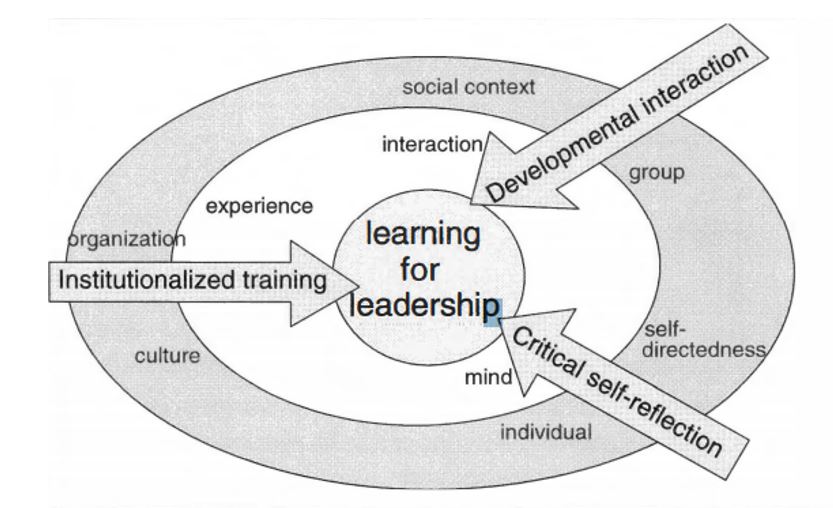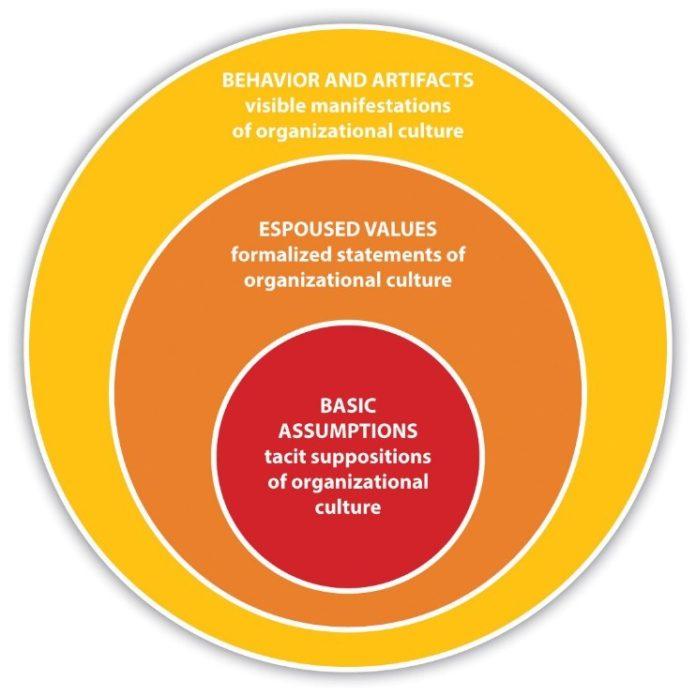Constructivist Theoretical Framework
Throughout the literature examined for this research, one concept that is consistently appearing is that the military mindset and leadership qualities are learned (Adler & Sowden, 2018; Kirchner & Akdere, 2017). Ranging from lower ranks to commanding officers, regardless of branch or purpose, individuals are expected to command strong leadership skills that are learned through culture, training, resilience, and teamwork as discussed below.
When applying this approach and standard to commercial organizations, a relevant theoretical framework is a constructivist approach to learned leadership training. In an era of leadership, learning and personal development are critical contributors. The constructivist approach seeks to identify constituent characteristics that are involved in the development of competency, which may include psychological, social-cognitive, behavioral, and message productional factors (Johnston, 2018). The constructivist approach emphasizes leadership development, effectiveness, and evaluation in how they perceive and perform their roles, as well as engagement in reciprocal processes such as learning, shared values and responsibilities, and facilitation (Yildirim & Kaya, 2019). Participating in the construction of knowledge, allows leaders to make necessary cognitive, behavioral, and practical changes regarding their role in an organization (Johnston, 2018). As seen in Figure 1 below, there are several approaches to acquiring knowledge and applying it to learned leadership. The critical constructivist approach suggests that the developmental synthesis of all these approaches is required to achieve expected results (Nissinen, 2001). At the individual level, there are mind-centered concepts such as self-reflection and self-directedness, while the organizational level encompasses institutionalized training and cultural frameworks (Nissinen, 2001).

Applying the constructivist approach to the research question presents an opportunity to explore how the learned military mindset can be applied in business settings. Similar to the military organization, the elements of said leadership and mindset can be learned if there are appropriate resources and culture in place as well as influences that promote critical self-reflection (Hilden & Tikkamäki, 2013). The military mindset is achieved through the multifaceted constructivist approach, where a combination of culture, experience, interaction, and individual growth contribute to the development of valuable characteristics. The key question becomes on how to transition that learning model to a commercial environment to achieve a similar mindset in leaders and employees.
Schein Model of Organizational Culture
Organizational culture is a commonplace term that typically encompasses the values and beliefs in an organization that ultimately impact its principles, ideologies, and policies. Edgar Schein proposes that organizational culture takes significant time to form and develop as employees and leadership undergo changes, adapt to external environments, and solve problems. The Schein framework proposes that there are three levels of organizational culture: 1) Artifacts, 2) Espoused Values, and 3) Basic Assumptions (also known as assumed values) (Schein, 2016). Artifacts are characteristics of an organization that are evident and easily perceived, everything from dress code to facilities to public vision. The values are the values of the individuals working in the organization, as over time, thought processes and attitudes make a deep impact on the culture and workplace environment. The mindset of individuals associated with an organization influences the culture of that workplace. Finally, assumed values are those that cannot be measured and stay hidden, but continue impacting the culture – inner aspects of human nature. This may include attitudes such as subconscious racism or sexism, or even practices that are never discussed but remain an open understanding within an organization (Schein, 2016).
The application of the military mindset in business has to take into account these numerous levels of organizational culture. As later discussed, some elements in the military culture are similarly publicly seen and discussed, while others are tacit and develop with years of focused teamwork, the culture of respect, and the discipline and resilience which define the mindset. Therefore, transitioning the mindset into commercial settings will also take time to develop the culture from initial workplace rules and public vision to the underlying understanding that the organization is a team that strives towards a common objective. Some of it may be counterintuitive to the common business practices of competition and self-centered individuality, but over time, with layers within this framework, the military mindset can be adapted.

References
Hattangadi, V. (2017). Edgar Schein’s three levels of organizational culture. Web.
Hilden, S., & Tikkamäki, K. (2013). Reflective practice as fuel for organizational learning.Administrative Sciences, 3(3), 76–95. Web.
Johnston L.M. (2018). Constructivist theories of leadership. In A. Farazmand (Ed.), Global Encyclopedia of public administration, public policy, and governance (pp. 1100-1103). Springer. Web.
Nissinen, V. (2001). Military leadership. A critical constructivist approach to conceptualizing, modeling and measuring military leadership in the Finnish Defense Forces. Web.
Schein, E. H. (2016). Organizational culture and leadership (5th ed.). Wiley.
Yildirim, M. C., & Kaya, A. (2019). The contributions of school principals as constructivist leaders to their schools’ organizational change.Asian Journal of Education and Training, 5(1), 1-7). Web.